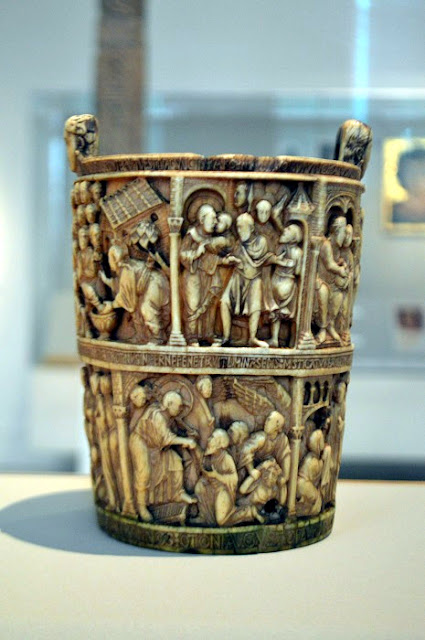< Table of Contents This little carved ivory bucket (or situla) was intended as a holder for holy water and is thought to have been carved around 980 or 981 AD in Milan and associated with the Holy Roman Emperor Otto II 's visit to the city. Situlae in ivory were particularly rare and only three are known to survive. This example is particularly fine and is decorated with twelve scenes from the Passion and Resurrection of Christ, in two rows of six. The situla bears three rows of text: at the rim, the centre line, and the basal edge. The upper two rows are lines from Coelius Sedulius' Hexameter version of the New Testament, while the lowest line may be translated as ‘May the Father who added thrice five to the years of Hezekiah, grant many lustres to the august Otto. Reverently, Caesar, the anointing-vessel wishes to be remembered for its art.’ The piece appears to have passed into a private collection in 1856, before being sold and resold several times – inclu...



